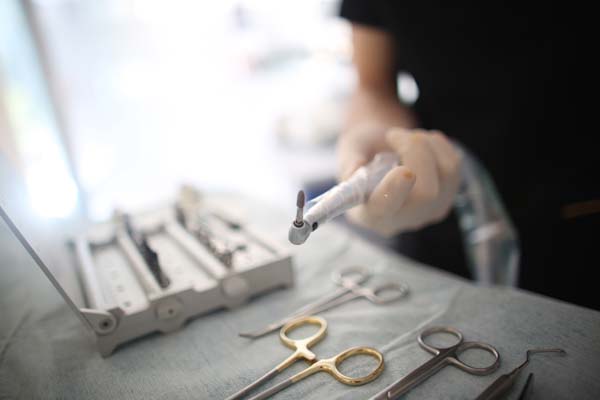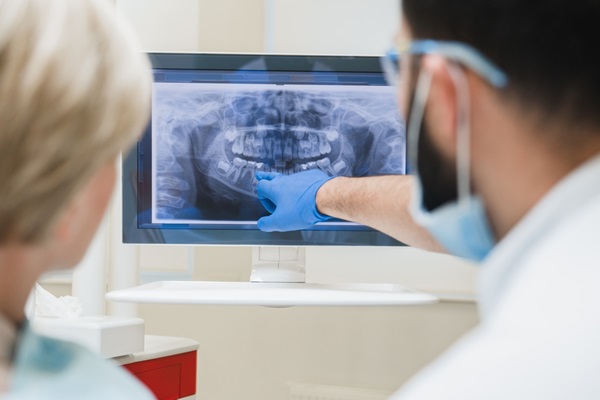When Socket Preservation Grafting is Recommended

A recent tooth extraction needs socket preservation grafting. An empty socket is a space left after a dental extraction. Bone loss is a problem in the absence of dental roots. It tends to compromise the structural foundation of the remaining teeth. If you want to know when a dentist recommends socket preservation grafting, here are the details.
What this procedure is
The jawbone starts to reshape the moment a tooth leaves it because it wants to recycle unused nutrients. That is why the dentist needs to perform socket preservation grafting. This process blocks the body’s reabsorption of unused components in the jawbone. It then prevents jawbone loss.
An alveolar ridge is a strip of bone surrounding the tooth roots. It is present in each tooth. This tiny bone dissolves once the tooth leaves the jawbone. This signals the body about the tooth’s absence. It then starts to demolish the stagnant tissues in the socket. This allows the body to conserve blood, energy, and materials.
The result of this process is bone atrophy. An alveolar ridge cannot regenerate. It cannot have any replacement without surgery. Oral surgeons use socket preservation grafting to keep this tiny bone intact. It also helps preserve the surrounding jawbone tissue until the dentist inserts dental implants. Dentists may recommend socket preservation after a dental extraction to reduce jawbone loss.
When to consider socket preservation grafting
The socket from a tooth extraction will be sensitive right after the extraction. This is one of the reasons for having socket preservation. This procedure helps protect the socket from damage. It also shields the socket from infection.
A socket can become dry after the tooth extraction. This can happen if the blood clot loosens and then exposes the nerve underneath. The clot is supposed to help the area heal. Preserving the alveolar ridge is also a reason for performing socket preservation grafting. The alveolar ridge breaks after a dental extraction. A deformed alveolar ridge will make it challenging to place a dental implant in the socket.
Any deformity in the bone may cause the procedure to fail. The possible success of a dental implant depends on the condition of the alveolar bone. Socket preservation can restore the patient’s teeth and close gaps between them. It can make the jawbone less prone to bone loss and keep the implants firm.
Socket preservation grafting is possible with the patient’s own bone or synthetic materials. The dentist will need to get the bone from another section of the tibia, hip, or jaw. A collagen membrane will cover up the socket once the dentist places the graft in the socket. It can stimulate and dissolve the bone graft. This encourages the graft to regenerate right away.
Socket preservation grafting can restore your appearance and dental health
Tooth extraction may need this procedure to stabilize the dental socket. The alveolar ridge needs repairs through socket preservation grafting. The regeneration of the tiny bone may lead to the possible success of the dental implant procedure. Your dentist will determine if you are a good candidate for this treatment.
Are you considering getting socket preservation grafting in the Lee's Summit area? Get more information at https://spectrumsurgical.net.
Check out what others are saying about our services on Yelp: Read our Yelp reviews.
Recent Posts
Research shows that Botox™ appeals to both men and women. Many individuals want to battle the signs of aging. This common treatment helps them look years younger without going under the knife. Learning when to get Botox from your oral surgeon can help you prepare for treatment day.Jaw clenching or teeth grinding at night is…
Searching for the most knowledgeable and skilled oral surgeon in your area can be challenging. But if you find the right dental care provider, you can achieve the enhancements that you want or need. Finding the right provider will need a little effort. Here are some tips you must consider for choosing the oral surgeon…
A facelift can give you a more youthful appearance. Getting this procedure from an oral surgeon can even enhance your oral health. This dental care provider has the knowledge and experience to bring out the results that you want. Here are the main reasons to get your facelift from an oral surgeon.This dental professional is…
A facial surgeon can help you improve your appearance or correct medical conditions. A complete assessment must happen first before creating a custom-fit treatment plan. This healthcare professional aims to help you meet your cosmetic and health goals. Here are the common procedures you should consider from an experienced facial surgeon.This form of surgery can…


